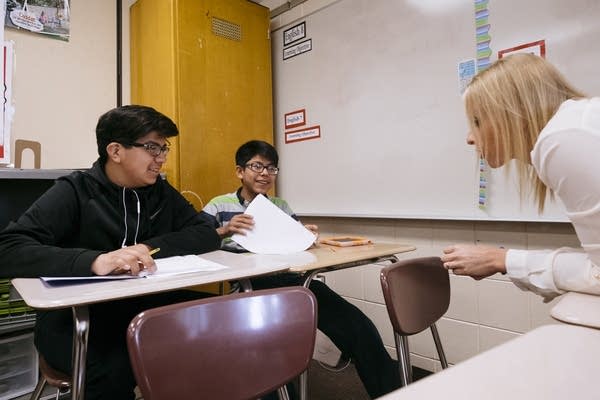Path to mastering English? Schools say students' home language is key

Seventh-graders Luis Leon, left, and Etni Sanchez check in with teacher Amanda Marek during their native Spanish speaking class at Shakopee West Junior High School, May 15, 2017.
Evan Frost | MPR News
Go Deeper.
Create an account or log in to save stories.
Like this?
Thanks for liking this story! We have added it to a list of your favorite stories.


